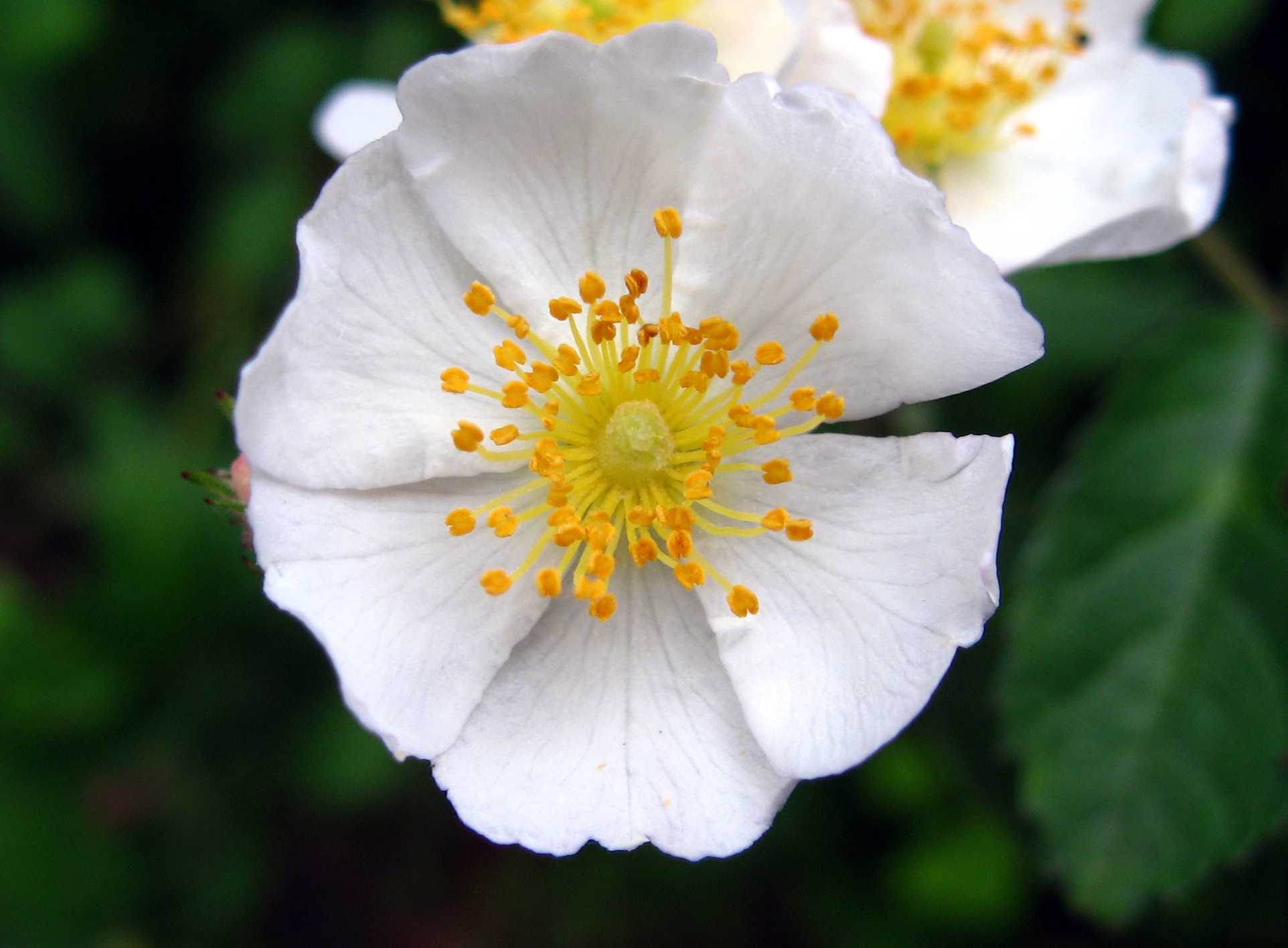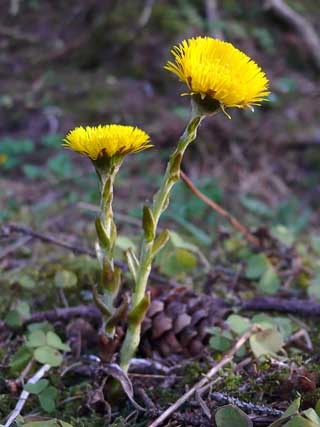Rosa multiflora
This is the second year I've overdone it with harvesting Rosa multiflora blossoms. I know she's invasive and most people would rather chop these bushes down, but oh my goodness have you taken a walk in the evening on a humid night in June? The fragrance is overpowering! Gorgeous. It makes me feel like a honeybee. Or at least the way I imagine a bee must feel, laden with nectar. Honey has this way of capturing the aroma of the rose and bringing out spicy notes I didn't know were there. Don't miss your chance - go smell the roses, and capture the magic in a jar of honey. I keep mine in a secret, special place in the way back of my tea cabinet. My private stash of rose honey magic when I need a little extra care or when I'm just feeling a little extra...
It's probably no coincidence that I always fall hardest for the plants that have the deepest lore in the folktale traditions and myths of my European ancestors. I have always loved a good story. Roses might win the prize for the plant with the longest running and most frequent appearances in myths, folktales, art, poetry, and all manner of symbolic iconography in human cultures throughout time. Don't quote me on that - I will admit, I've been known to make up statistics when it's convenient. But without exaggerating, I can say with confidence that roses are front and center in our collective unconscious as important plant archetype.
So what's to love about the rose besides her poetic and romantic lore? She's got a lot of medicinal properties as well. And I don't just mean the metaphorical kind. The trick is, you have to find the right kind of roses. Most of the over-bred, hybridized garden varieties are sprayed with all sorts of chemicals and lack some of the health benefits of their older, wilder relations. If you want to learn more about the rise of rose gardens in history check out this great blog. Cultivated roses have their place, but if you want to find the good stuff, go out your door and into the closest weedy, overgrown patch o' land you can find that is not too close to a road. You'll probably hear me say this a lot, but I'm a fan of finding the wild, invasive or "weed" version of any plant that grows in abundance close to you. The closer you get to wild, the better. Why? First off, you don't have to worry whether it's okay to harvest or not, since there's more than enough to go around - in fact, you'll be helping the ecosystem by trimming the plant back. Plus you don't have to drive far or pay a ton in shipping costs to get it. They're free, abundant, and easy to access! That's what the folk herbalists call "people's medicine." The problem is, the common wild roses have gotten a bad rep in the last century. Currently, Rosa multiflora is one the USDA's most wanted invasive or noxious weed list as a plant that needs to be controlled. Yup, that's right - that just makes her a badass in my book.
Around here in the Northeast, if you go out with your guidebooks looking for wild roses, you're most likely ID Rosa multiflora. Or, rather, she'll find you when her prickers snag your pants as you walk by. She's everywhere. On almost every block. Other common and popular roses for medicinal purposes are Rosa rugosa (Beach Rose) and Rosa canina (Dog Rose). Both of these are nice options, but I like to use what I have on hand. I have been known to book a late-season beach excursion just to harvest the hips of the gorgeous Beach Rose (aka "tomato rose" due to the size of those hips!). I'm more likely to actually get around to harvesting and processing from a plant I can find in my yard or my neighbor's yard than one I have to make a special trip to at just the right time of year. It's all about timing when you're making your own medicine. But if you miss the few weeks of gorgeous and fragrant blooms in early June, it's okay - you can wait for the little hips to form and after the frost has sweetened them up, you can eat the little red fruits throughout the winter as a seedy trail snack.
Look for Rosa multiflora as you drive down the country lanes. When you find her, wave and tell her hi for me. We go way back, she and I. You can tell her she's scored a whole chapter in my upcoming book. If you're feeling brave, you might even pull your car over and snip a few stalks with flowers. When you get home, go ahead and pluck the flowers off into a jar. Pour some honey over the top until all the blossoms are covered. Go ahead. I dare you. You might just fall in love...
Wild Rose - Rosa multiflora
Common names: Japanese rose, rambler rose, baby rose.
Family: Rosaceaa
Parts used: flowers, hips (fruit), leaves
Description: Thorny shrub native to Asia. Introduced to north America to manage soil erosion. As will all members of the rose family, each flower has 5 petals and 5 sepals. Pale pink - white flowers May through June. Compound leaves with 5-9 leaflets. Likes to grow in disturbed soils, at edges of forests, yards, along fences and roads.
Actions: Astringent, anti-inflammatory,anti-depressant, vulnerary, nervine, mild antibacterial, styptic, cardiovascular tonic, blood tonic (esp Hips), aphrodisiac
Uses: as an edible wild plant, roses have many culinary uses. Petals and hips are popular as syrups, jellies, jams, cakes and cookies. The hips are high in vitamin C and antioxidants that serve well for immune support, for colds and flus and nutrient deficiencies. The seeds have a mild laxative effect.
Flowers + Leaves- as a poultice or vinegar wash, leaves and flowers are excellent for sores, wounds, burns, rashes, and other skin irritations. Mild anodyne action helps relieve pain. Keep some rose water on hand for first aid purposes.
Rose petal honey is helpful for soothing sore throats and chest coughs as well as a great topical on wounds and burns.
As a tea, rose petals and leaves give relief from the inflammation, congestion, and itchy eyes of allergies, and colds and coughs. Also helpful for gi complaints such as diarrhea, gas, cramping and gut inflammation due to food sensitivities.
Calms nervous tension, anxiety, stress and temporarily eases depression. Use as a tea for relaxing nervine action.
Anti-inflammatory properties are useful in treating arthritis and other inflammatory disorders. A Traditional Chinese Medicine formula uses Rosa mutiflora hips with Japanese honeysuckle flowers to combat inflammatory disorders with demonstrated clinical results. (See sources, below). Roses of all varieties are said to help reduce chronic muscular- skeletal pain.
For cardiac heath: roses have often combined with hawthorn berries in traditional heart tonics that promote healthy circulation and to help open the vascular system. Bioflavoniods in hips are very beneficial to heart. Rose hip powder has been shown to reduce blood pressure, lower cholesterol, and reduce risk for heart disease and diabetes.
For diabetes and obesity: some evidence in clinical studies show rose hip extracts can help regulate blood sugar and prevent excessive weight gain through complicated metabolic processes. More research is needed, but there's promising evidence to support the claim that rose hip extracts can help combat obesity.
History and Lore:
Over 100 varieties of wild roses throughout the world
The herbalist Juliette De Barclay Levy once said of the rose, “Love is like a rose, and roses are not made within days. Years are needed for full development, and each bloom has a slow unfolding.”
Multiflora rose is sometimes used as rootstock for propagating other roses.
Roses are associated with ancient goddesses Innana, Ishtar, Aphrodite, Eros, Adonis, as well as Virgin Mary,
Perhaps due to roses' association with fertility goddesses, roses became the no 1 symbol of love throughout history.
The name rose is derived from the Greek, rodon, meaning red. Red was the color of the ancient Greeks roses, and myth says that the rose was born of the drops of blood shed by Adonis.
In the 1960's, the Department of Highways planted multiflora rose in interstate medians as a means of reducing headlight glare and as a crash barrier.
Wild roses also played a role in traditional Native American herbal medicine, and rosehips were eaten as food in many tribes, either directly or as part of a pudding. Paiute, Nez Perce, and Interior Salish people believed that wild roses kept ghosts from causing harm to the living, so they were often placed in the homes or clothing of people who were in mourning or felt haunted. For more on Native American use and folklore about rose click here.
It has also been used for centuries by the Mayans for healing after birth. A vat of plants, including rose, would be heated. The new mother would sit on a chair with a hole in the seat, tarped from the neck down while the vat of steaming plants was slipped underneath. See Source here
Energetic/spiritual/magical Purposes: roses are great healers for emotional pain, sorrow, loss and grief. Known as 'heart-openers,' roses can quickly resolve trapped resentments, and clear the body of tension from anxiety, trauma and anger. Roses are great allies for depression as well as the scent lifts the spirits. Keep rose flower essence or rosewater on hand for stressful times, wounded hearts, and deep sadness. Traditionally, roses are used in all manner of love spells, sex magic and ritual.
As a traditional aphrodisiac, roses are well known allies in love. Said to increase libido and enhance sexual performance.
Roses are excellent when used in sacred ritual bathing - added to a bath with the intention to heal, purify, or restore. As taught by beloved ethnobotanist and Curandero, Rocio Alarcon. Rocio teaches this old traditional practice of using water blessed with herbs as a way removing the energy of depression and anxiety that result from our daily activities and the environment that surrounds us. Roses can be used to remove energy from the cells and generate positive thoughts.
Dosage and Preparations: Internally, lovely prepared in foods such as rosehip jelly, rose petal pudding, or as vinegar to add to salads and dressings. As tincture or glycerite, or vinegar, take a tsp up to 3 times a day or more as needed. Externally - Makes a great salve, liniment, or balm for lips and skin. Apply liberally to any skin that needs soothing. Dilute a few tsp of vinegar in water for burns or use freely on food.
Precautions and warnings: Beware the prickles (aka thorns) as you harvest. Hairs around seeds in hips can be irritating to throat and digestive tract if consumed in quantity. Strain well if making rose hip tea or separate the hairs when harvesting to avoid the itchy hairs. Also, when harvesting, be extra vigilant for ticks. Apparently tick nymph nests are more common in areas dense with invasive shrubs like Rosa multiflora.
Recipe: How to make your own rose water
1 cup of packed fresh rose petals (dried is OK, but fresh picked is better for scent)
2 cups of boiling water
Place rose petals in a large bowl & pour in 2 cups of boiling water.
Cover the bowl & let it sit for at least an hour or until the liquid is cool.
Strain & squeeze the liquid from the petals into a sterilized jar or spray bottle. Refrigerate the rose water & use when it's completely chilled. Add a little essential oil of roses if you like a stronger scent.
This is a great refreshing & cooling spray to use on your face & body during hot summer days. Keeps for a few weeks in the fridge. Add a splash of alcohol to preserve longer.
Sources:
Hardin, Kiva Rose.
Gladstar, Rosemary.
Grieve, M. A Modern Herbal
Herbal Academy - International School of Herbal Medicine
Shriver WG et all." Multiflora rose invasion amplifies prevalence of Lyme disease pathogen, but not necessarily Lyme disease risk." Parasite Vectors. 2018 Jan 23;11(1):54. retrieved: https://www.ncbi.nlm.nih.gov/pubmed/29361971
Cheng, BC, and Yu, H et all. "A herbal formula comprising Rosae Multiflorae Fructus and Lonicerae Japonicae Flos inhibits the production of inflammatory mediators and the IRAK-1/TAK1 and TBK1/IRF3 pathways in RAW 264.7 and THP-1 cells" J Ethnopharmacol. 2015 Nov 4;174:195-9.
Cavalera M, Axling U, Berger K, Holm C. "Rose hip supplementation increases energy expenditure and induces browning of white adipose tissue." Nutr Metab (Lond). 2016 Dec 6;13:91. eCollection 2016.
http://www.dailymail.co.uk/health/article-2087820/Daily-dose-rosehip-extract-help-cut-heart-disease-lower-blood-pressure-reduce-cholesterol.html







